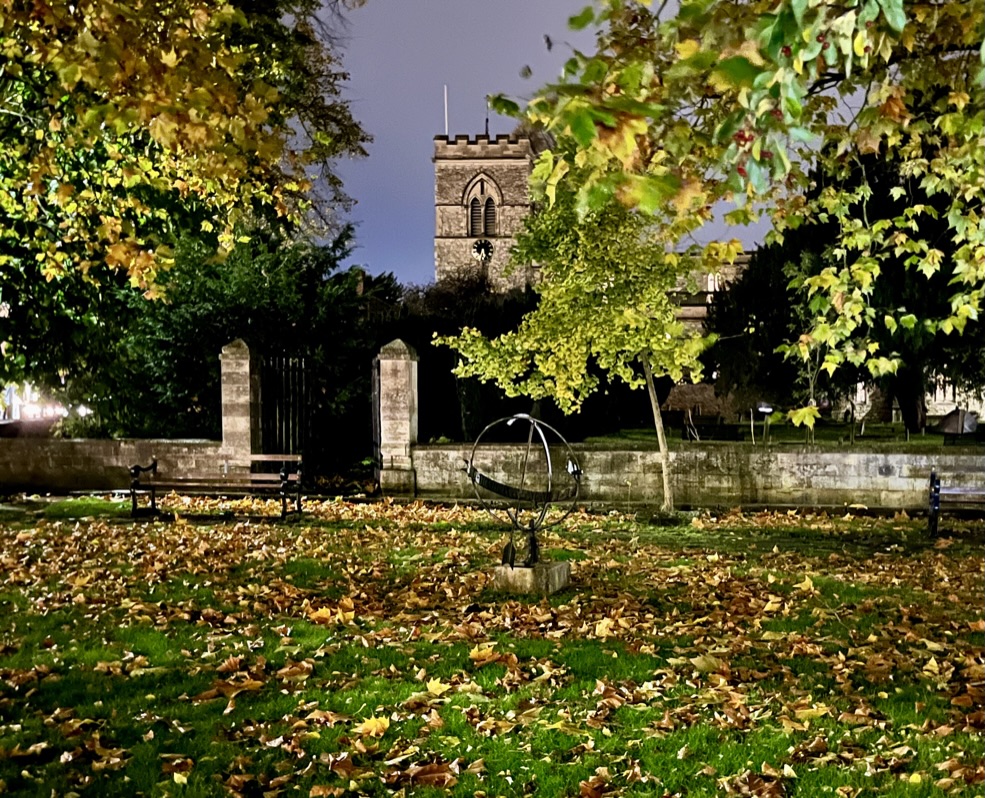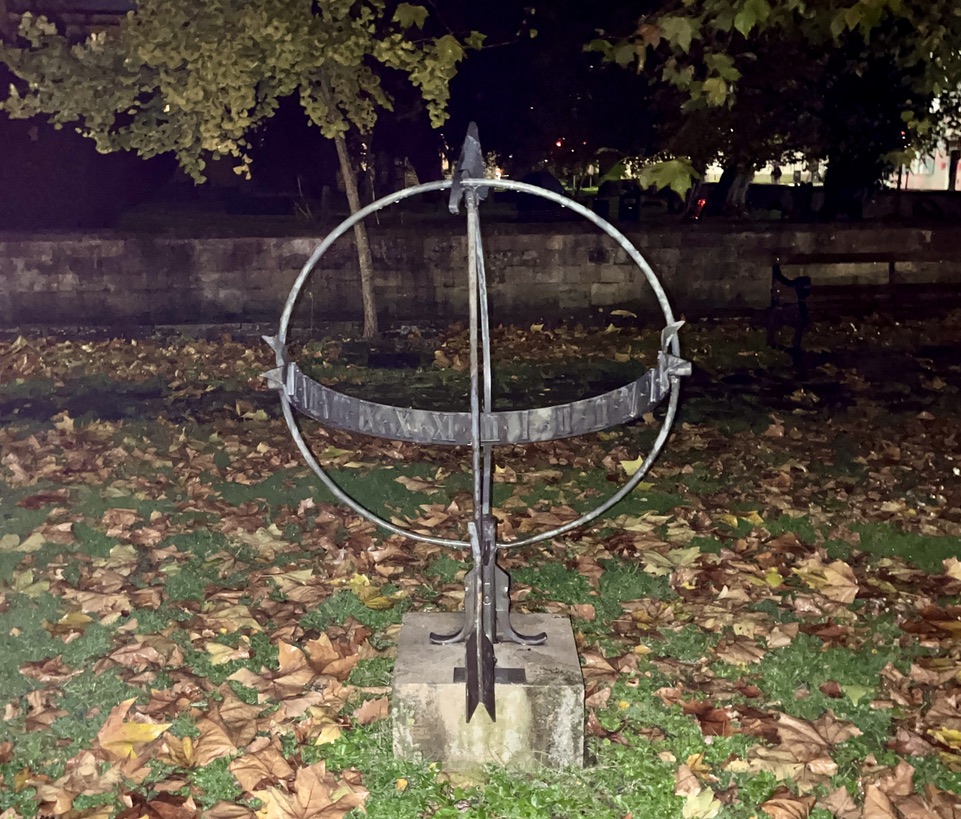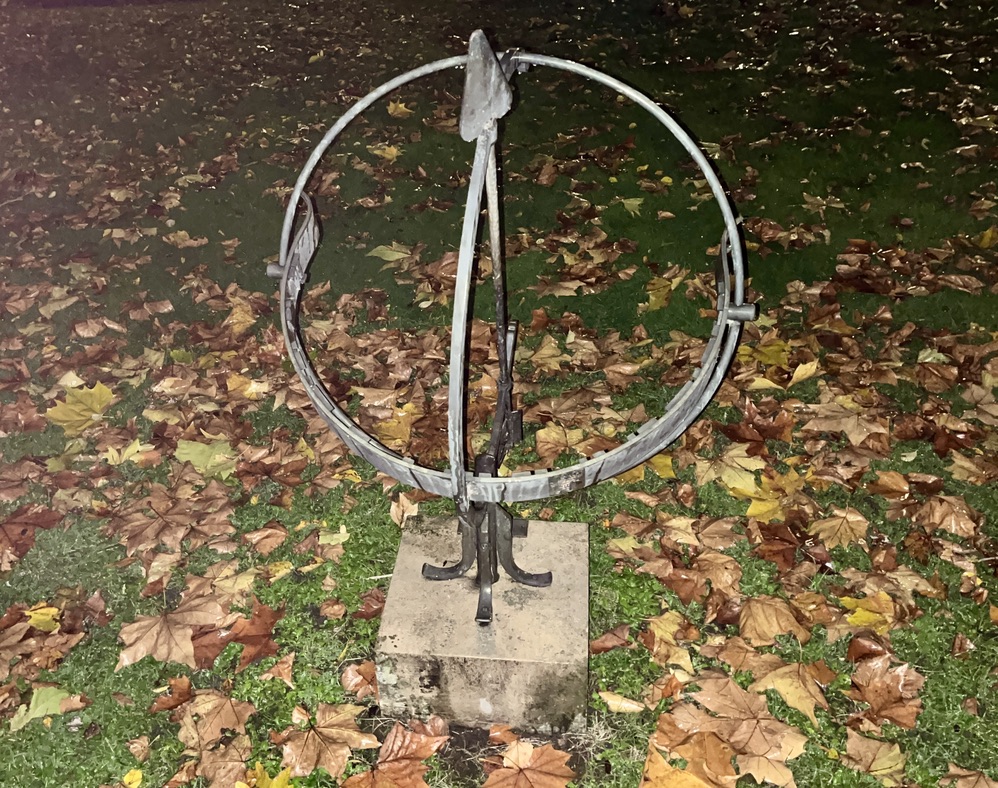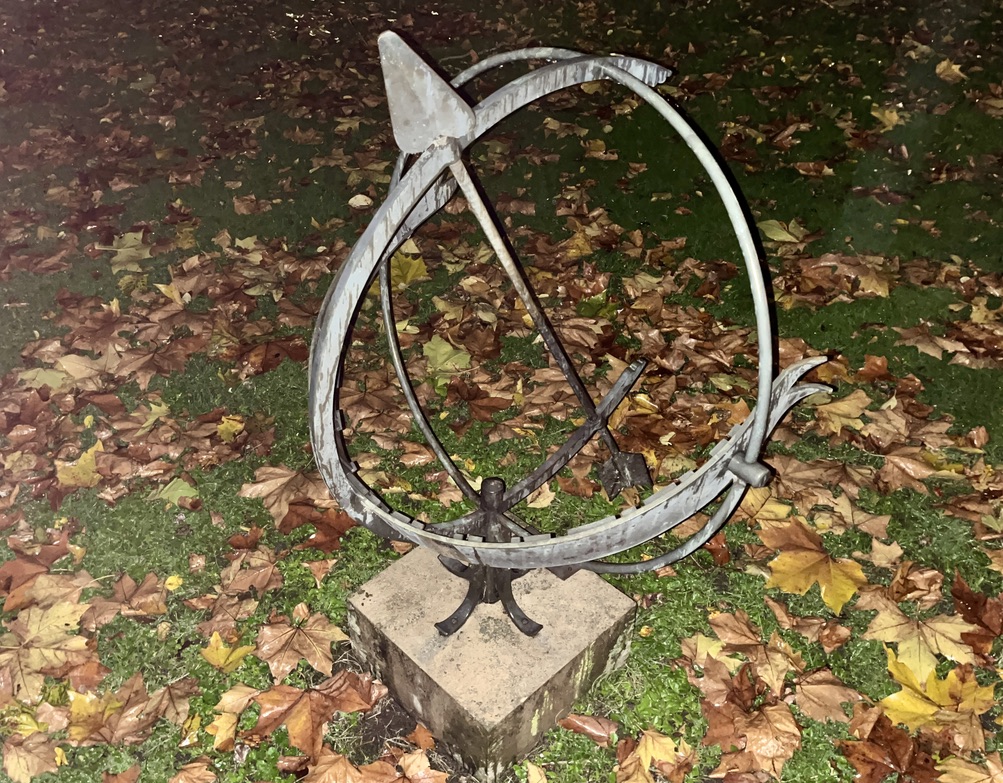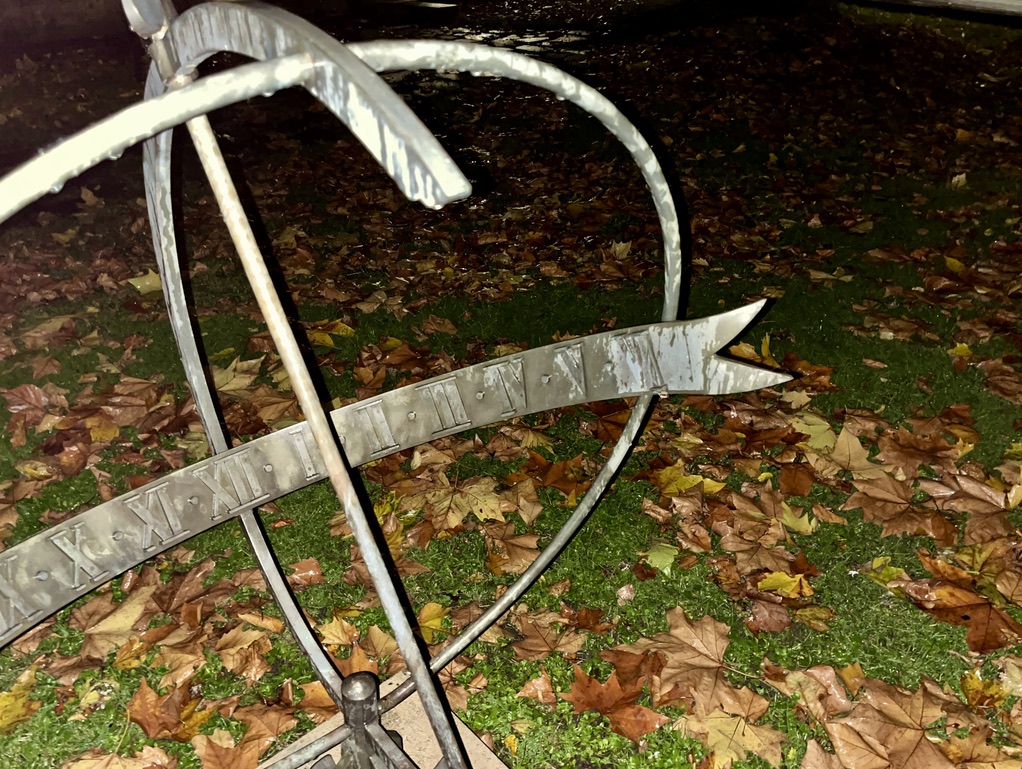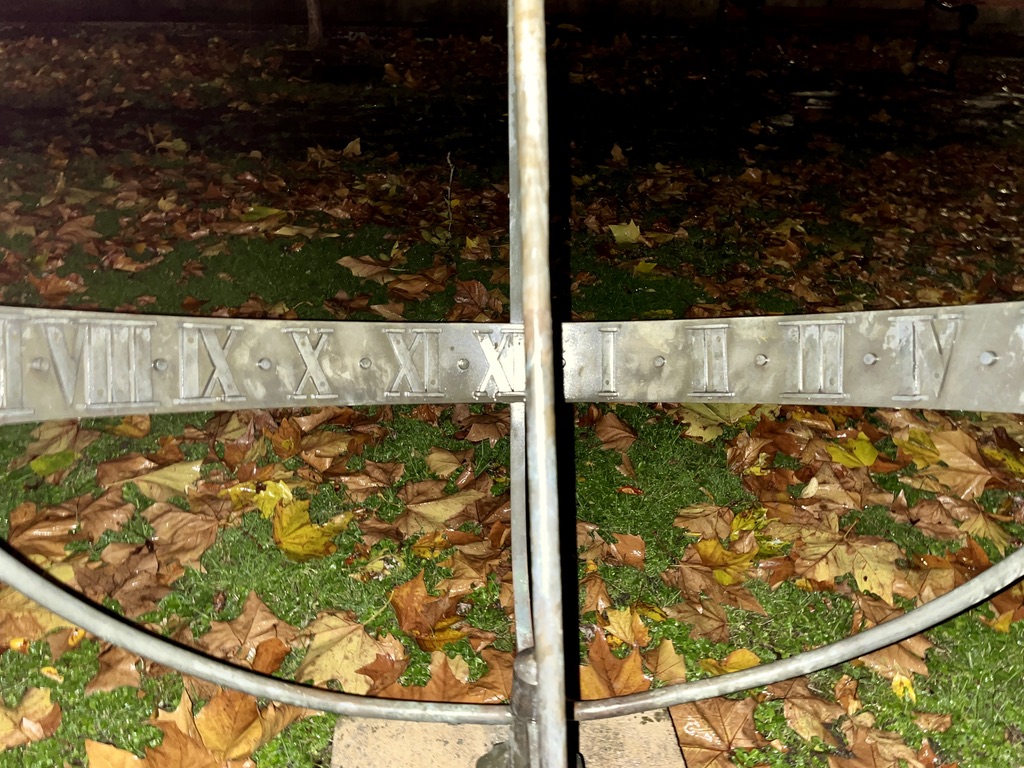
Rousham is a fine country house less than 20m N of Oxford, built for the Dormer family in 1635 and still in their possession. Its landscape gardens were designed by William Kent, the inspired founder of the great tradition of such gardens in England. Little has changed at Rousham since C18. The RH site notes: In ‘Around the World in Eighty gardens’ Monty Don says (William) Kent is the great genius of eighteenth-century garden design and Rousham is his masterpiece, one of the greatest gardens in the world”

DOLLAND SUNDIAL AT ROUSHAM HOUSE OXON
BSS RECORD
By the pigeon house in the rose garden east of the house is a bronze horizontal dial 314mm in diameter made by Dollond of London.. It shows the customary hours IV – VIII divided into halves and quarters.The hours are also displayed in Arabic numerals and divided into periods of 10 And 2 minutes. There is an Equation of Time scale and round the centre of the dial a 16-point compass rose. There is a noon gap to compensate for the 7/16″ thick gnomon. The dial is mounted on a tapering stone column with a circular capital.
DOLLAND
Dolland workshops were active from approx 1750 to 1850. The business was founded by John Dolland who was joined by his son Peter, and later other members of the family. The name became synonymous with the crafting of intricate and precise scientific instruments. Sundial plates were a (rare, I think) sideline. Dolland collections can be found in many museums and individual pieces in auction rooms. All items have the Dolland mark, but some cannot be attributed with certainty to a particular member of the family.
George Dollond was elected to a fellowship into the Royal Society in 1819 and was an active participant in founding the Astronomical Society in 1820 (Confusingly, his son was also called George)




LINK TO THE ROUSHAM SITE
GSS Category: Horizontal Sundial; Country House Sundial; Dolland Sundial
All photos: Keith Salvesen

